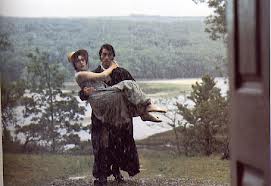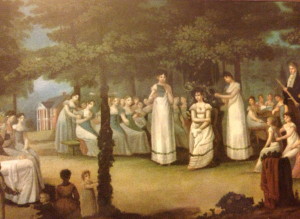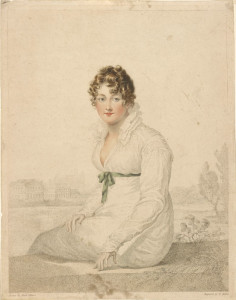I want to share with you all some news.
Dennis and I are together again.
Yes, Dennis the kneebrace.
 We have been on and off since I indulged in some extreme gardening a few years ago. Having fallen flat on my back while ripping up English ivy, it was–oh my gosh, it was like Marianne and Willoughby in better weather. With his assistance I could stand and he flung me onto the back of his stallion and rode with me back to safety, me nestled in the comfort of his warm cloak, inhaling his masculine woodsy scent of lime and tobacco and beer and all that. Well, sort of. I’m a bit nervous of sniffing Dennis after the very hot weather where you sweat in strange places, like the back of the knee.
We have been on and off since I indulged in some extreme gardening a few years ago. Having fallen flat on my back while ripping up English ivy, it was–oh my gosh, it was like Marianne and Willoughby in better weather. With his assistance I could stand and he flung me onto the back of his stallion and rode with me back to safety, me nestled in the comfort of his warm cloak, inhaling his masculine woodsy scent of lime and tobacco and beer and all that. Well, sort of. I’m a bit nervous of sniffing Dennis after the very hot weather where you sweat in strange places, like the back of the knee.
And since then, he has answered my call. Except for the time he didn’t and I fell into a decline. I decided then I’d go with the first substitute I met, and in the pharmacy I met a sneering billionaire kneebrace who wanted to strap me up good and proper and restrain me in fifty shades of whatever. Consequently I now have an Upstairs Dennis and a Downstairs Dennis.
Most recently we took a fabulous trip to San Francisco and together we strode through the city and sat around for hours in coffee shops writing. I’m not even sure my lovely hosts were aware that I brought Dennis and not my husband. We were very discreet.
And after that trip, things sort of cooled off.
But this morning, feeling the pangs of unrequited love (pangs at any rate), I took Upstairs Dennis out of the dirty laundry basket, reveling in the clean masculine smell of his sweat (or more likely my own) and got it on.







